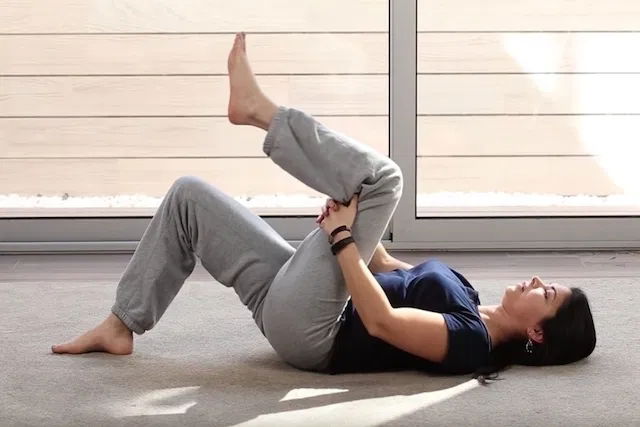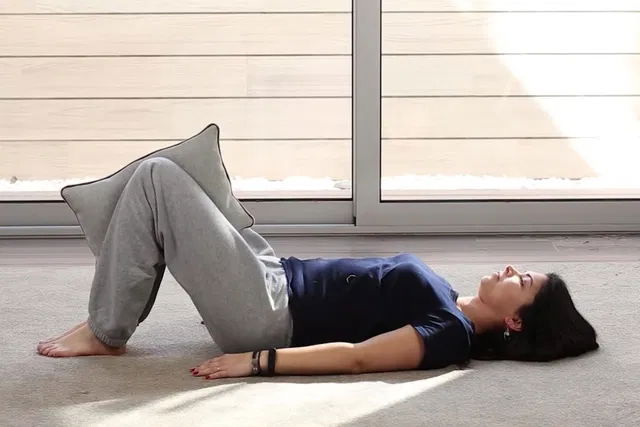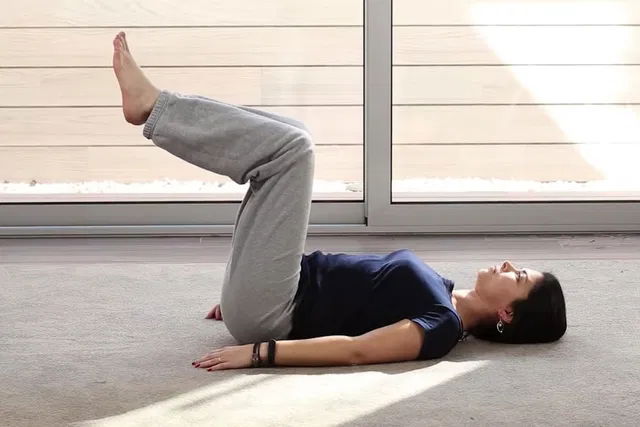Sciatica stretches and strengthening exercises can help to relieve sciatic nerve pain and inflammation and improve overall leg movement. These exercises are aimed at reinforcing the muscles surrounding the sciatic nerve. They should first be approved by a doctor or physiotherapist to ensure they are appropriate for your pain and physical abilities.
The sciatic nerve is the largest nerve in the body. It begins in the lumbar spine, innervates the the glutes and runs down the back of the leg, extending into the feet. This is what sciatica pain is often associated with pain, shocks, tingling or burning that radiates down the leg. Read more about sciatica and complete our online symptoms quiz if you suspect you may be experiencing this condition.
You should follow-up with an orthopedic surgeon or family doctor periodically to ensure your sciatica is well-managed. The doctor may prescribe medications or physiotherapy, as well a stretches or other exercises to compliment medical treatment.
Stretching exercises
Sciatica stretches help to lengthen the muscles in the lower back, glutes and thighs, like the biceps femoris, piriformis and pyramidal muscles, which can help to relieve sciatic nerve pain. These stretches should be done gently and within your limits to avoid further pain and irritation. They can be done once or twice a day.
1. Biceps femoris stretch

Stretching the biceps femoris allows you to stretch the muscle located at the back of the thigh. This stretch also lengthens the muscles in the glutes and and lower back.
How to perform: Start by laying on a flat surface with your arms beside you and your hands facing down. Bend your knees and place the soles of your feet flat on the ground. This is your starting position. Lift one knee and bring it toward your chest, placing your hands behind your leg for support. Hold this position for 30 seconds, then repeat on the other leg.
2. Piriformis stretch

This stretch allows you to lengthen the piriformis muscle, located in the glutes. This can help to reduce compression on the sciatic nerve and relieve pain.
How to perform: Return to the starting position. Cross one foot over the opposite leg, resting the foot on the opposite knee. Place your hands behind the leg that remains on the floor, and lift the leg from floor, toward you. Hold this position for 30 seconds and repeat on the other side.
3. Lying cross-over stretch

This stretch targets the pyramidalis muscle located in the abdomen, while also targeting your glutes and lower back.
How to perform: Return to the starting position, lying belly-up with your feet flat on the floor. Cross one foot over the opposite leg and place it on the floor. Lower the crossed knee as much as you can to the floor, until you can feel a stretch in your lower back. Hold this position for 30 seconds and repeat on the other side.
4. Hamstring stretch

This stretch helps to elongate the hamstring, while also stretch the calf and foot.
How to perform: Return to the starting position. Lift one foot from the ground and place a belt around the bottom if this foot. Straighten the leg and lift it higher to stretch against the resistance of the belt. Hold this position for 30 seconds and repeat on the other side.
These exercises should be repeated at least three times each, and can be done once or twice a day.
Strengthening exercises
Strengthening exercises for sciatica can help to prevent new episodes of pain and inflammation in the sciatic nerve. They help to target muscles in the lower back, abdomen and glutes, which all play a role in supporting the spine and sciatic nerve.
5. Abdominal contractions

These abdominal contractions work on breathing and strengthening the ab muscles.
How to perform: Lie on the floor belly-up and bend your knees with your feet flat on the floor. This is your starting position. Exhale as much air as possible from your lungs, and contract your abdomen bringing your belly button towards your back. Hold this contraction for about 10 seconds and then relaxing completely, inhaling slowly.
6. Bridge

A great strengthening exercise to prevent sciatica pain is a bridge, as it helps stabilize the core by working the glutes, lower back and abdomen
How to perform: Return to the starting position. Lift your hips from the floor, and hold this position for at least five seconds. Then slowly lower your hips, making sure that your lower spine and glutes touch the floor first. Repeat at least five times
7. Pillow between the knees

Placing a pillow between your knees helps to strengthen the muscles in the abdomen, glutes and inner thighs.
How to perform: Return to the starting position and place a pillow between your knees. Squeeze it for five seconds before releasing. Repeat this three times, keeping your abdominal muscles contracted throughout the exercise.
8. Leg elevations

Lifting your legs is another great way to strengthen the muscles abdomen, lower back and glutes.
How to perform: Left both legs from the ground, keeping the knees bent at a 90 degree angle. Keeping one leg suspended in this position, lower the opposite leg to the floor, until your toe touches the ground. Then left this foot to the previous position and repeat on the other leg
Check out more home remedies for sciatica to compliment these stretches, as well as sciatica medication that you doctor may recommend for moderate to severe pain.
Exercises to avoid during a flare-up
If you are experiencing an inflamed sciatic nerve, it is important to avoid some exercises and movements that may worsen pain and inflammation, such as:
- Lifting heavy weights that require flexing your back, such as deadlifts or squats, as this can put a lot of pressure on the lower back and sciatic nerve;
- Twisting movements of the back, as this can aggravate sciatic pain;
- High-impact exercises, such as running, jumping, burpees or any activity with repetitive movements
- Carrying weight on your back, like performing squats with a bar or a sandbag
- Repetitive movements in which there is flexion or extension of the spine, such as sit-ups.
It is important to take into account that each person is different and, therefore, pain triggers for one person can be different in another. It is important to be assessed by a physiotherapist or health professional to determine the extent of inflammation and to recommend the best exercises for you.
Learn more about sciatic nerve pain during pregnancy and how it can be relieved.






























